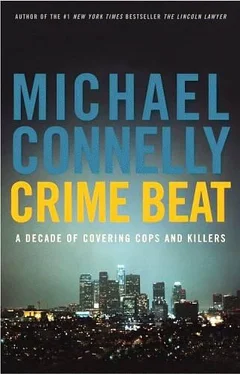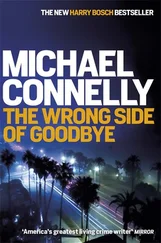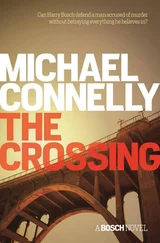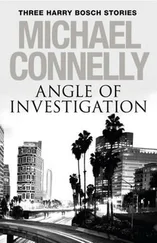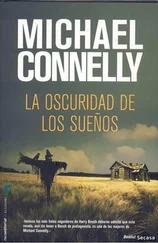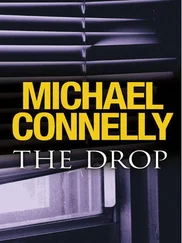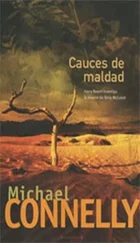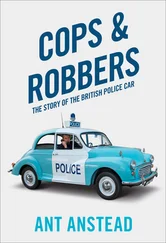Working informants is one of the ironies of death investigation. Snitches are often criminals themselves; information is gathered on the street by those who work the street – drug dealers and thieves among them. Some wear beepers so they don’t miss calls from either customers or the cops. Cops despise them and need them at the same time. But the trouble at the moment is that this time nobody is calling with any information on the Michael Connable case.
“So far, we have nothing,” says Walley, a large man who seems more to hunker down over his desk in the squad room than to sit at it.
Russo and Allen are having similar difficulties. Their efforts to track down the missing Troy are getting them nowhere. The jail prisoner they talked to didn’t know any Troy, was no help at all. The fast-food worker named Troy that Melwid came up with can’t be located, and might not be the right one anyway. On his application form at the restaurant he put a phony address down. They have tips to three other men who might be their Troy but so far they’ve hit dead ends.
By Thursday, the only thing for sure about the week’s two cases is that both are getting older and harder to solve.
George Hurt is sitting at his desk, shaking his head. He has the reading glasses he usually wears while doing paperwork off and the tip of one of the earpieces clenched in his teeth. The plastic tip is grooved from being clenched there often. It is that kind of job.
Hurt has to shake his head because he is mildly amused, confused and annoyed. In the wake of the week’s two slayings he has sat back and watched and read about two occurrences that have left him perplexed. The Connable murder has resulted in a civic meeting between police officials and Riverside residents, and members of the gay community are airing fears that gays in the neighborhood are being targeted by gunmen. So far, the issue has played well in the newspapers and on TV, but the problem is that no one has checked with Hurt or the case detectives, Walley and Ciani, about it. And as far as they are concerned, such fears are unfounded.
“As far as we know at this point, sexual preference had nothing to do with it,” Hurt is saying. “We are looking at it as random violence. Some kid with a gun wanted to pop somebody. And he did.”
Hurt says the confusion on the case has been further compounded because the night before, one of the local TV news programs out of Miami showed a composite drawing of Troy from the Moody case and said it was the man police were seeking in the Connable shooting. Troy is a white man. The Connable suspect is black.
“Unbelievable, how it gets sometimes,” Hurt says.
Shortly before midnight on Thursday, July 2, Johnnie Eddines becomes number 40. Detectives Phil Mundy and Pete Melwid, along with Hurt, are called in from home.
But there is no murder scene to respond to this time. Eddines died in a hospital. He had been found in his car in the 600 block of Northwest 16th Avenue, bleeding from several bullet wounds. He was alive when medical rescuers got there and was transported to Broward General Medical Center. He made it no farther.
The case presents one more irony of homicide investigation. The effort to save Johnnie Eddines had been valiant, but in the end unsuccessful. And, as in most cases where such efforts are made, the crime scene has basically been destroyed, left unpreserved because of rescue efforts inside Eddines’ car to save him. It means the effort to save someone may hurt the effort to charge those responsible for his death.
What it also means is that there is no need for the homicide detectives to gather at the scene. Melwid goes by the hospital to gather information on Eddines. Mundy makes a cursory stop at the scene and then goes on to the detective bureau. Hurt heads there as well.
Patrol officers and a midnight shift detective have corralled witnesses to the shooting and are shuttling them to the police station. The victim’s car is put on the back of a tow truck and pulled to the police station, too. By midnight, the investigation has begun.
All days should be like Friday. All weeks should end like this.
By 2 a.m., Mundy, Melwid and Hurt are wrapping up the Eddines murder, the first of the week’s cases to be closed.
From the witnesses they had learned that they had what was basically a “smoking gun” case; open and shut. Eddines had stolen jewelry from his sister and the man who had given it to her came after him – with two friends and a gun. The detectives spent the morning hours taking statements from the witnesses and preparing warrants for the three suspects. It will just be a matter of catching them. They go home with the case, for the most part, cleared.
The good luck doesn’t end with the Eddines case. Vicki Russo comes in to work and gets a little bit of the wish she made outside Walter Moody’s apartment four days earlier. The wish for a “gimme.”
A friend of the long-sought-after Troy is on the phone saying that Troy wants to come in and talk about Moody. Russo says that’s fine, she’ll be waiting. A break is a break, even if it comes after a week of chasing dead ends.
When Troy comes in, Russo and Allen sit him down in one of the squad’s interview rooms. It is just big enough for a suspect and two interviewers to sit around a table with fluorescent lighting above. The only window, small, square and mirrored, is in the door.
The suspect, whose full name is Troy Tetreault, age 18, begins by saying he was there when Moody was murdered but he didn’t do it. He ends by admitting he did it, but only because he was defending himself. Moody was attacking me, he says.
But all of the explanations Troy offers do not explain how someone defending himself would stab his attacker between the shoulder blades and then ransack and rob his home. Troy is charged with first-degree murder, and case number 38is now counted as cleared.
What has been a bad week has turned out well for the homicide squad. Two out of three cases cleared. Moody’s murder is the 31st cleared so far this year, a better than 75 percent rate.
In future weeks, Walley and Ciani would continue to work the Connable slaying but it would remain unsolved. The detectives would get no closer to the three men of Group Two than they were the night one of them opened fire on Group One. In mid-August, Ciani would leave the police department to join a private investigation firm. The file on Connable would remain open on Walley’s desk, the detective waiting for a break, a name or a clue that would lead to the shooter. But it wouldn’t come, and he would have other cases to follow.
The murder pace would continue in Fort Lauderdale, with the city surpassing the previous year’s murder toll of 42 by the end of July and steadily heading toward the all-time high of 53. Two detectives would be temporarily assigned to the squad to help handle the case flow.
Sitting at his desk one day not long after the last week of June, George Hurt would ponder whether the pace was here to stay, whether three murders a week would no longer stand out as an aberration in Fort Lauderdale.
“Believe me, I’ve been giving it a lot of thought,” he says. “But you can’t really predict what will happen. I’ve been hoping that this is just an oddball year. It used to be that four or five homicides a month meant a very heavy month. Now that doesn’t look so bad to me.”
Whatever happens, Hurt says, the homicide squad is ready.
“Whether there are 45or 75homicides, we are here,” he says. “I could say that old saying about it being a dirty job but somebody has to do it, but I don’t look at it that way. I see it as being a dirty job but somebody has to know how to do it. We know how. We do good work here.”
Читать дальше
